 |
Foodoric and associated companies are chemicals manufacturing companies operated in India USA UAE Europe Asia and other countries around the world. The associates have one or more of certifications like ISO-9001, ISO-14001, ISO-22000:2005, FSSC 22000; OHSAS 18001; Kosher and Halal Certified; HACCP, FSSAI and FDA - GMP approval. Buyers are assured of good quality and CIF wholesale and retail price for supplies of our Calcium Lactate. |

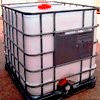
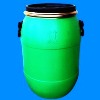
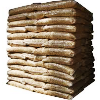
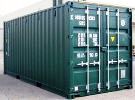
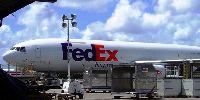
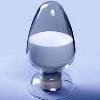
Calcium Lactate USP BP IP FCC Food Grade Manufacturers Suppliers
Calcium Lactate
USP BP IP FCC Food Grade

Calcium Lactate CAS Number: 5743-47-5 or (814-80-2 anhydrous), Molecular Formula: [CH3CH(OH)COO]2Ca-5H2O , Molecular Weight: 308.29
Calcium Lactate FCC Food Grade Specifications
2-Hydroxypropanoic Acid Calcium Salt
[CH3CH(OH)COO]2Ca·xH2O
C6H10CaO6·xH2O Formula wt, anhydrous 218.22
INS: 327 CAS: [814-80-2]
DESCRIPTION
Calcium Lactate occurs as a white to cream-colored, crystalline powder or granules. It contains up to five molecules of water of crystallization. The pentahydrate is somewhat efflorescent and at 120° becomes anhydrous. It is soluble in water and practically insoluble in alcohol.
REQUIREMENTS
Identification: A 1:20 aqueous solution gives positive tests for Calcium and for Lactate.
Assay: Not less than 98.0% and not more than 101.0% of C6H10CaO6, calculated on the dried basis.
Acidity: Passes test (about 0.45%, as lactic acid).
Fluoride: Not more than 0.0015%.
Lead: Not more than 2 mg/kg.
Loss on Drying: Pentahydrate: Between 22.0% and 27.0%; Trihydrate: Between 15.0% and 20.0%; Monohydrate: Between 5.0% and 8.0%; Dried Form: Not more than 3.0%.
Magnesium and Alkali Salts: Not more than 1%.
Calcium Lactate Monohydrate BP Ph Eur Grade Specifications
C6H10CaO6,H2O --- 236.0 --- CAS 41372-22-9
DEFINITION
Calcium bis(2-hydroxypropanoate) or mixture of calcium (2R)-, (2S)- and (2RS)-2-hydroxypropanoates monohydrates.
Content: 98.0 per cent to 102.0 per cent (dried substance).
CHARACTERS
Appearance: White or almost white, crystalline or granular powder.
Solubility: Soluble in water, freely soluble in boiling water, very slightly soluble in ethanol (96 per cent).
IDENTIFICATION
A. It complies with the test for loss on drying (see Tests).
B. It gives the reaction of lactates.
C. It gives reaction of calcium.
TESTS
Solution S: Dissolve 5.4 g (equivalent to 5.0 g of the dried substance) with heating in carbon dioxide-free water prepared from distilled water, allow to cool and dilute to 100 ml with the same solvent.
Appearance of solution: Solution S is not more opalescent than reference suspension and not more intensely coloured than reference solution.
Acidity or alkalinity: To 10 ml of solution S add 0.1 ml of phenolphthalein solution R and 0.5 ml of 0.01 M hydrochloric acid . The solution is colourless. Not more than 2.0 ml of 0.01 M sodium hydroxide is required to change the colour of the indicator to pink.
Chlorides: Maximum 200 ppm.
Sulphates: Maximum 400 ppm.
Barium: To 10 ml of solution S add 1 ml of calcium sulphate solution. Allow to stand for 15 min. Any opalescence in the solution is not more intense than that in a mixture of 1 ml of distilled water R and 10 ml of solution S.
Iron: Maximum 50 ppm.
Magnesium and alkali salts: Maximum 1 per cent.
Heavy metals: 10 ppm maximum.
Loss on drying: 5.0 per cent to 8.0 per cent, determined on 0.500 g by drying in an oven at 125 °C.
Calcium Lactate Trihydrate BP Ph Eur Grade
C6H10CaO6,3H2O --- 218.2 --- CAS 814-80-2 (anhydrous)
DEFINITION
Calcium bis(2-hydroxypropanoate) or mixture of calcium (2R)-, (2S)- and (2RS)-2-hydroxypropanoates trihydrates.
Content: 98.0 per cent to 102.0 per cent (dried substance).
CHARACTERS
Appearance: White or almost white, crystalline or granular powder.
Solubility: Soluble in water, freely soluble in boiling water, very slightly soluble in ethanol (96 per cent).
IDENTIFICATION
A. It complies with the test for loss on drying (see Tests).
B. It gives the reaction of lactates.
C. It gives reaction of calcium.
TESTS
Solution S: Dissolve 6.2 g (equivalent to 5.0 g of the dried substance) with heating in carbon dioxide-free water prepared from distilled water, allow to cool and dilute to 100 ml with the same solvent.
Appearance of solution: Solution S is not more opalescent than reference suspension and not more intensely coloured than reference solution.
Acidity or alkalinity: To 10 ml of solution S add 0.1 ml of phenolphthalein solution and 0.5 ml of 0.01 M hydrochloric acid . The solution is colourless. Not more than 2.0 ml of 0.01 M sodium hydroxide is required to change the colour of the indicator to pink.
Chlorides: Maximum 200 ppm.
Sulphates: Maximum 400 ppm.
Barium: To 10 ml of solution S add 1 ml of calcium sulphate solution. Allow to stand for 15 min. Any opalescence in the solution is not more intense than that in a mixture of 1 ml of distilled water and 10 ml of solution S.
Iron: Maximum 50 ppm.
Magnesium and alkali salts: Maximum 1 per cent.
Heavy metals: Maximum 10 ppm.
Loss on drying: 15.0 per cent to 20.0 per cent, determined on 0.500 g by drying in an oven at 125 °C.
Calcium Lactate Pentahydrate BP Ph Eur Grade
C6H10CaO6,5H2O --- 218.2 --- CAS 814-80-2 (anhydrous)
DEFINITION
Calcium bis(2-hydroxypropanoate) or mixture of calcium (2R)-, (2S)- and (2RS)-2-hydroxypropanoates pentahydrates.
Content: 98.0 per cent to 102.0 per cent (dried substance).
CHARACTERS
Appearance: White or almost white, crystalline or granular powder, slightly efflorescent.
Solubility: Soluble in water, freely soluble in boiling water, very slightly soluble in ethanol (96 per cent).
IDENTIFICATION
A. It complies with the test for loss on drying (see Tests).
B. It gives the reaction of lactates.
C. It gives reaction of calcium.
TESTS
Solution S: Dissolve 7.1 g (equivalent to 5.0 g of the dried substance) with heating in carbon dioxide-free water R prepared from distilled water R , allow to cool and dilute to 100 ml with the same solvent.
Appearance of solution: Solution S is not more opalescent than reference suspension and not more intensely coloured than reference solution.
Acidity or alkalinity: To 10 ml of solution S add 0.1 ml of phenolphthalein solution and 0.5 ml of 0.01 M hydrochloric acid . The solution is colourless. Not more than 2.0 ml of 0.01 M sodium hydroxide is required to change the colour of the indicator to pink.
Chlorides: Maximum 200 ppm.
Sulphates: Maximum 400 ppm.
Barium: To 10 ml of solution S add 1 ml of calcium sulphate solution. Allow to stand for 15 min. Any opalescence in the solution is not more intense than that in a mixture of 1 ml of distilled water and 10 ml of solution S.
Iron: Maximum 50 ppm.
Magnesium and alkali salts: Maximum 1 per cent.
Heavy metals: Maximum 10 ppm.
Loss on drying: 22.0 per cent to 27.0 per cent, determined on 0.500 g by drying in an oven at 125 °C.
Calcium lactate USP Grade
C6H10CaO6xH2O (anhydrous) 218.22
Propanoic acid, 2-hydroxy-, calcium salt (2:1), hydrate.
Calcium lactate (1:2) hydrate [41372-22-9].
Calcium lactate (1:2) pentahydrate. 308.30 [CAS 5743-47-5].
Anhydrous [CAS 814-80-2].
Calcium Lactate contains not less than 98.0 percent and not more than 101.0 percent of C6H10CaO6, calculated on the dried basis.
Identification—
A: A solution (1 in 20) responds to the tests for Calcium.
B: Infrared Absorption 197K . USP30
Acidity: Titrate 20 mL of a solution (1 in 20) with 0.10 N sodium hydroxide, using phenolphthalein TS as the indicator: not more than 0.50 mL is required for neutralization (0.45% as lactic acid).
Loss on drying: Distribute a 1- to 2-g portion evenly in a suitable weighing dish to a depth of not more than 3 mm, and dry at 120 for 4 hours: the pentahydrate loses between 22.0% and 27.0% of its weight; the trihydrate loses between 15.0% and 20.0% of its weight; the monohydrate loses between 5.0% and 8.0% of its weight; and the dried form loses not more than 3.0% of its weight.
Volatile fatty acid: Stir about 500 mg with 1 mL of sulfuric acid, and warm: the mixture does not emit an odor of volatile fatty acid.
Heavy metals: the limit is 0.002%.
Limit of magnesium and alkali salts: Mix 1.0 g with 40 mL of water, carefully add 1 mL of hydrochloric acid, and heat the solution to boiling. Proceed as directed in the test for Magnesium and alkali salts under Calcium Carbonate, beginning with “Rapidly add 40 mL of oxalic acid TS”: the weight of the residue does not exceed 5.0 mg (1.0%).
Calcium lactate IP Grade
also offered.

Calcium Lactate Manufacturers Suppliers:
Foodoric Group of Cos
India, USA, UAE, Europe
e-mail: info@foodoric.com

Copyright
Last
14 March, 2022
Calcium Lactate Suppliers, Exporters, Importers, Manufacturers offering good CIF wholesale and retail prices, quality and online information.
A jackal woke up early in the morning and went in to the plains. He looked at his long shadow in the rising morning sun and said to himself, "I must have a camel for my meal today".
He kept moving around till noon and it was getting hot and the jackal was tired. He was also hungry and thirsty. He looked at his small shadow in the mid-day sun. He murmered, "I was only joking about the camel, a mouse will do".